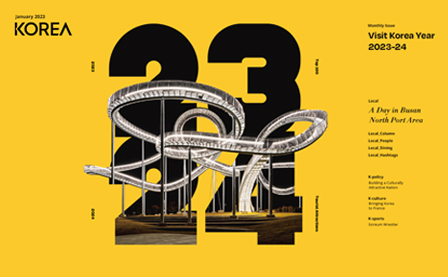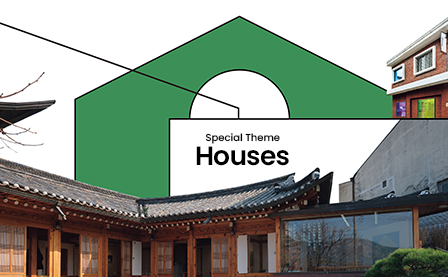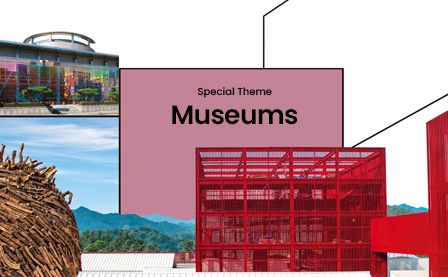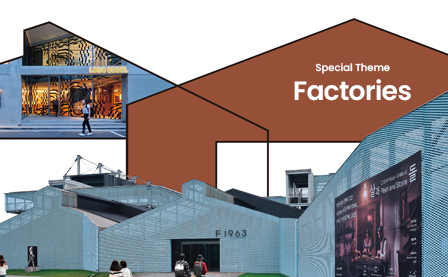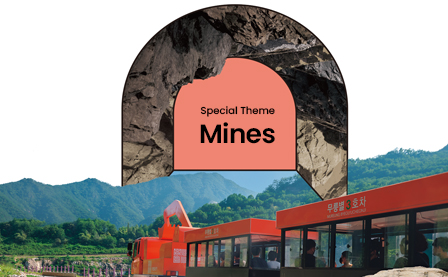February 2023

Local
People
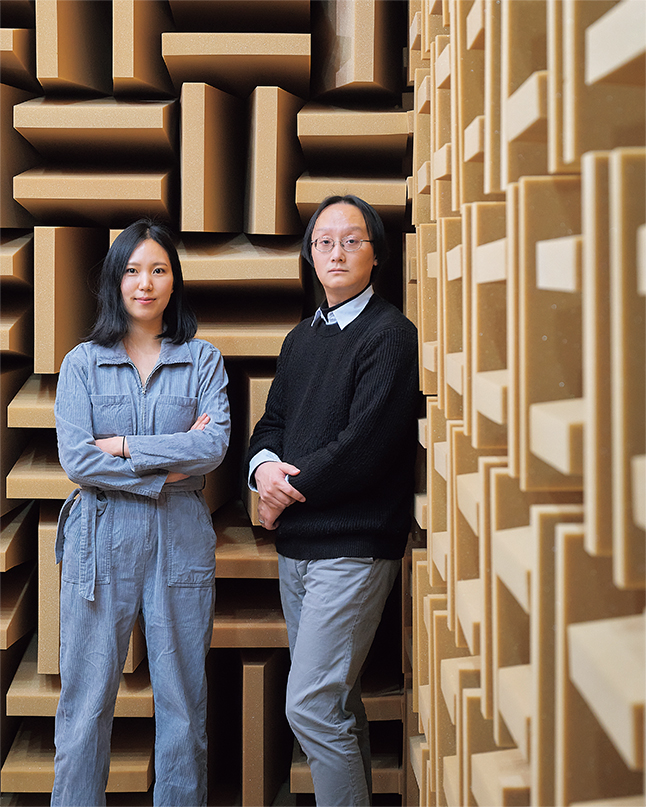
Photographed by Kim Byounggu
When
Science and
Art Meet
Science, which represents logic, and art, which represents emotion. What will happen when two seemingly different fields of study meet? We encountered individuals who provided answers to this question through experimental creative activities that combine science and art.
“Artience Daejeon” is a program where one researcher from the Daedeok Innopolis and one artist meet to present experimental works together as a rendezvous between science and art. Scientists from the Daedeok Innopolis propose themes, and the artists choose one and create a piece of art over the course of a year. Amidst various themes, a sound-measuring scientist and a music-depicting artist collaborate under the theme of “sound.”
A Scientist Measuring Sound
Ph.D. Cho Wan-ho, a group head of the Acoustics, Ultrasound, Vibration Metrology Group at the Korea Research Institute of Standards and Science (KRISS), is researching methods for acoustic measurement standards. But what does this really mean? To explain, Cho used the example of vehicles. “Korea permits medium-sized passenger cars with decibel levels no higher than 100 dB. Of course, automakers will assert that their vehicles don’t emit noise above 100 decibels, but on what basis is that measurement valid?” Cho says that measured values should be internationally valid using common standards measured by recognized methods.
Although he is researching measurement standards for acoustics, Cho has also been interested in recording and preserving sound. “As the saying goes, ‘Seeing is believing,’ so people most prefer visual information,” he says. “Since sound is information that flows as time passes, it is difficult to simultaneously compare or analyze it. Because of this, quantifying or visualizing sound has long been an important research topic.”
Cho explains that since it was impossible to record sound in the past, the preservation of sound had to rely on visual methods such as onomatopoeia and musical scores. In modern times, it has become possible to preserve sound through recordings, but visual expression remains the easiest way to convey information and feelings. “Therefore, many studies have been conducted on engineering tools that visually express the position of the sound source or the degree of influence,” he says.
When conveying data, visual expression is very efficient in expressing information, just as a graph is more effective than a table of numbers. Through the Artience program, Cho is trying to find ideas for visual expressions that can objectify the subjective feelings people feel.
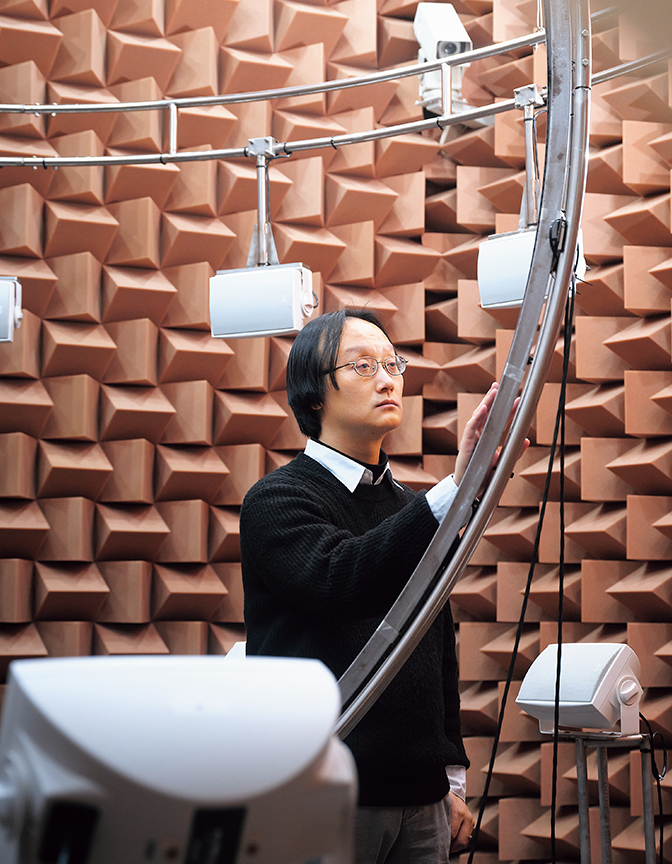
Cho, who researches the Acoustic and Vibration standards at KRISS, participated in Artience 2023 due to his interest in recording sound.
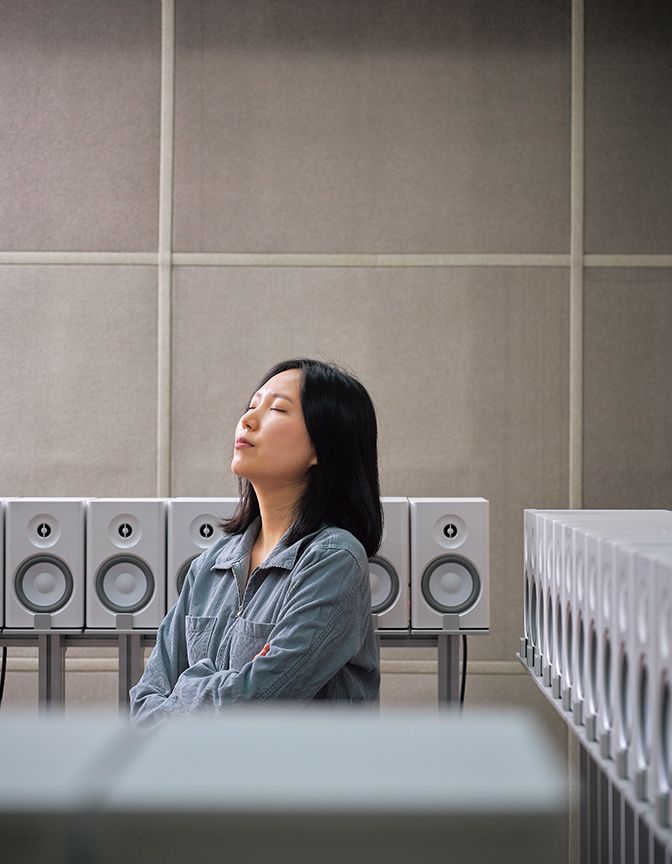 Lee works on projects that transform music into a canvas through ‘The Music Visualization System.’
Lee works on projects that transform music into a canvas through ‘The Music Visualization System.’A Painter Depicting Music
Lee Da-hee is an artist who creates visual works from music. Lee claims that she was compelled by music from an early age because of her parents’ love for classical music. From this, she developed a curiosity about blending her love for both painting and music. Out of this curiosity, she started to organize music into systems that could be expressed visually.
“It was unfortunate that we used to listen to music as a singular performance,” she says. “The composer composed the music with an underlying intention. If you listen carefully, you are able to sense patterns that emerge from the composition process and hear those structures more clearly. However, it is not easy to grasp the structure of music simply by listening to a performance once, or via the original notation. When music is visualized and expressed in colors or patterns, the intention of the composer becomes clearer to the eye.”
Through numerous works, Lee discovered that mathematical principles and forms became apparent within her process, which she calls the “Music Visualization System.” In this process, the arrangements are interpreted to communicate the underlying patterns. The system includes a set of documents explaining how she matches colors and notes or visualizes various arrangements of shapes and brush strokes as specific patterns.
However, Lee still has some challenges to solve. “My Music Visualization System is based on relative analysis, but music is greatly affected by the circumstances in which the piano is recorded and the condition of the instruments or singers. Then a question arose: How can I control this part and record the sound with more objective standards?”
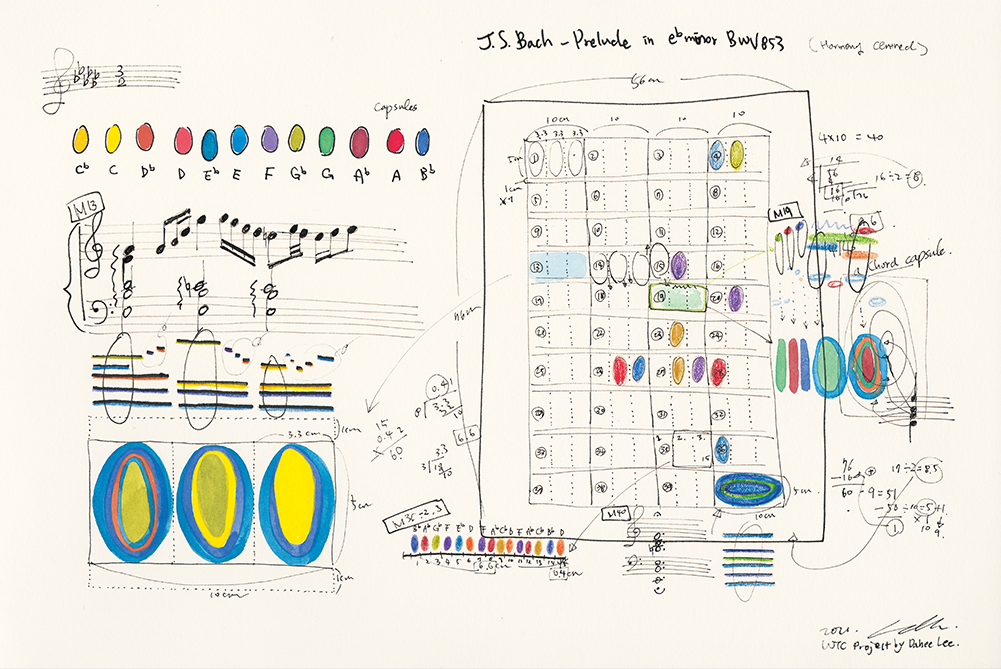 J.S.Bach-Prelude in eb minor BWV853, 2021, mixed media on paper, 29.7x42.0cm © Lee Da-hee
J.S.Bach-Prelude in eb minor BWV853, 2021, mixed media on paper, 29.7x42.0cm © Lee Da-heeCanvas With Music
Cho and Lee met through 2023 Artience Daejeon, despite sharing nothing other than a love of sound.
Lee learned that people had certain expectations regarding how she should pursue her work for Artience, expectations she did necessarily share. “Many people ask me why I only deal with classical music. I guess it’s because, from a commercial point of view, there is more demand for depicting popular songs,” she says. “However, my goal is not to work on different genres of music, but to build a standardized music visualization system that can be applied to any music. And I want to establish objective and standardized rules through this collaboration with Ph.D. Cho.”
Cho said that he felt science and art had recently become disassociated from one another, despite having common elements.
“Leonardo da Vinci also used geometry and optics in his paintings,” he says. “Also, in the case of art, many people borrow scientific elements in their techniques of expression, and science and art are similar in that they find rules and characteristics. I think you can find ideas through this collaborative process. Personally, I think it is a good opportunity to break free from engineering’s traditional perspective.”
Art and science, which at first glance appear to be incompatible, interact with one other to allow art to become more sophisticated and science to grow richer. This is why people are excited to see the works that will result from Cho and Lee’s collaboration, where the precise, beautiful music of Bach will resonate.
 J.S.Bach-Prelude in eb minor BWV853, 2021, watercolour on paper, 76.0x56.0cm © Lee Da-hee
J.S.Bach-Prelude in eb minor BWV853, 2021, watercolour on paper, 76.0x56.0cm © Lee Da-hee View of all
View of all